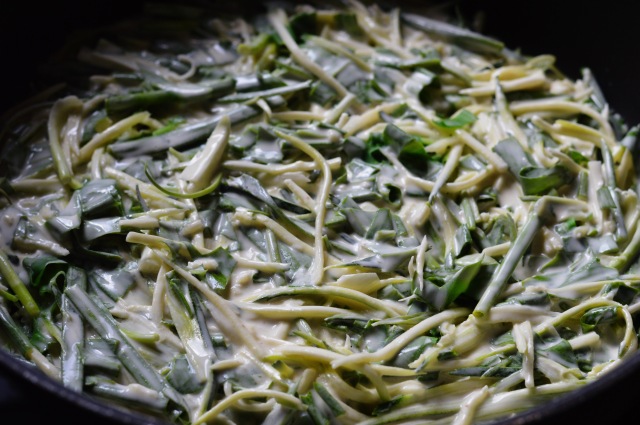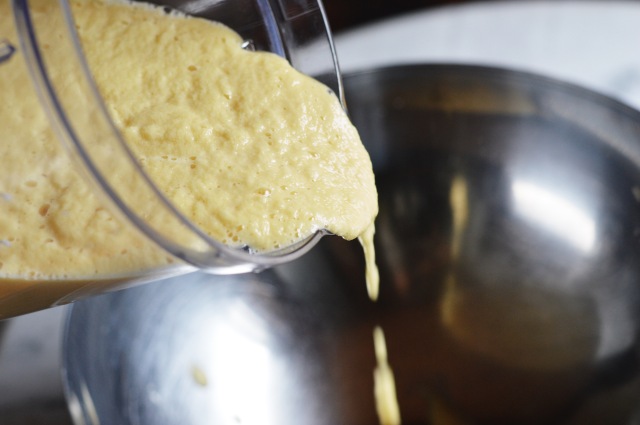
One of the first signs of spring for me here in Switzerland is wild garlic (Bärlauch in German). As soon as the snow starts to melt and we have a few warmer days at the end of the winter, you can start to spot wild garlic. And as soon as it really feels like spring, you see these leaves pop up everywhere and in abundance!

Wild garlic or Allium ursinum can often be found in shady and moist areas. And if you see them growing somewhere once, they will most likely be growing there year after year. The best time to eat this wild garlic is in the first half of spring before they start to flower. And when picking your own wild garlic, go for the younger and smaller leaves as they are more delicate in taste. As you pick these leaves, you can instantly smell garlic and that garlic taste is stronger when eaten raw.

For some reason, today was the first time I ever thought of using wild garlic in Korean food. I have no idea why it took me so long considering Koreans use garlic in almost every dish! So I thought to myself, why not pick some wild garlic today since the season is coming to end soon and add it to Korean Scallion Pancakes (Pajeon)? I added lots of wild garlic, green onions and zucchini to make this very green and very delicious pancake (Jeon in Korean) on this beautiful spring day.








INGREDIENTS (makes 1 large pancake)
1/2 cup white flour (70 g)
1/2 cup rice flour (60 g)
1 cup cold water (235 ml)
3/4 tsp salt (4-5 g)
pinch of sugar
1/2 tsp fermented Korean soybean paste (optional or can substitute miso)
1 cup julienned zucchini (90 g)
1 cup roughly chopped wild garlic (20 g)
1 cup roughly chopped green onions length-wise (40g)
vegetable oil to fry pancake
For the Soy Dipping Sauce
2 1/2 tbsp soy sauce
2 tbsp rice vinegar
1 tbsp mirin
few drops of sesame oil
freshly cracked pepper
green onion slices for garnish
INSTRUCTIONS
- In a large bowl, mix the white flour, rice flour and cold water and mix well. Whisk in the salt, pinch of sugar and soybean paste until well mixed. Let the batter sit for 5 minutes or so.
- Add in the zucchini, wild garlic and green onions and mix to make sure the vegetables are evenly distributed.
- Heat a large frying pan on high and add in approx. 2 tbsp of vegetable oil. When the pan is piping hot, pour all of the pancake mixture and spread evenly on the pan.
- When the edges start to brown, flip your pancake over and fry the other side until golden brown. Add a bit more vegetable oil if necessary.
- Once both sides are crispy golden brown, slice and serve hot with soy dipping sauce.
- For the dipping sauce, mix soy sauce, rice vinegar, mirin, sesame oil, pepper and green onion slices in a small bowl.
NOTES
- For an extra crispy pancake, make this ahead of time and when ready to serve, heat and fry the pancake on both sides again.























